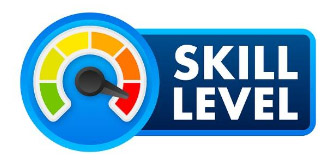🏢 9,000+ Organisations
🏆 6 x L&D/HR Awards
⭐ 4.8/5 Highly Rated
🧠 24 Years' Experience

Coaching isn’t just for football teams. Team leaders and managers can positively impact their employees when they adopt a coaching style of leadership — and no, this doesn’t mean making them run or lift weights for hours at a time.
Everything you need to know about the coaching style of leadership, from how it works to its pros and cons — is explained below.

The coaching style of leadership is centred around high performance and increased productivity.
Leaders who take a coaching approach know how to identify employees’ strengths and weaknesses. They can also harness this information and use it to motivate individual team members to achieve their goals and get more done.
Those who embrace the coaching leadership style also encourage collaboration and teamwork. They believe that the whole is stronger than the sum of its parts, and they aim for everyone to work together as a cohesive unit.
It’s a leadership style that we always cover in our Management Training and Management Development Programmes because it’s a very popular topic.
The above leadership definition explains generally how a coaching leadership style works. However, leaders can coach their teams using many approaches. The following are some of the most well-known and influential types of coaching styles:
Democratic coaches don’t dictate to their team members. Instead, they encourage employees to contribute to the decision-making and goal-setting process. Then, they offer ongoing guidance and support to help employees achieve those goals.
Autocratic coaches (also known as authoritarian coaches) are on the opposite end of the spectrum from democratic coaches. Those who practise this style make the decisions (usually with no input from employees), establish expectations, and tell team members what they must do. Coaches who use style aren’t really coaching at all.
A laissez-faire approach is all about letting people make their own decisions without interfering. These coaches give employees a great deal of autonomy and don’t care much for the conventions of a traditional office.
Laissez-faire coaching is also known as holistic coaching.
A bureaucratic coaching style is like an autocratic style. It is rigid and adheres to specific, strict rules. It follows a clear model for decision-making, too, and works very well in highly regulated environments.
Mindful coaching is centred around mindfulness practises, which encourage non-judgmental awareness of a person’s feelings and thoughts. Mindful coaches are open-minded and accepting. They strive to create a calm, low-stress work environment.
The developmental coaching style involves a coach identifying learning opportunities for team members and supporting their ongoing growth. Developmental coaches act as thought partners, and they work alongside employees to help them develop new skills and attain goals.
As the name suggests, the vision coaching style involves a clear vision and a detailed plan to achieve it. Vision coaches know what they want to accomplish, and they work with their employees to figure out how to get there – like a visionary leadership style.
The group coaching style is built around the idea that two heads are better than one.
One or more coaches work with two or more team members in group coaching. The group dynamic encourages better interpersonal relationships and allows everyone to build a stronger rapport with one another.
Transformational coaches have a strong alliance with their team members. They and their team agree on specific goals and processes they must follow to achieve them. They act collaboratively, offering genuine support and feedback along the way.
Intuitive coaching involves supporting team members and encouraging them to trust their own ideas and believe in their own perspectives. Intuitive coaches believe in the power of one’s intuition, and they help their team members develop their own intuitive senses.
Transactional coaching operates based on exchange-focused relationships. It is task-driven and time-based, and coaches strive to encourage performance improvements while mitigating stumbling blocks as much as possible.
Transactional coaches might use rewards or punishments in transactional coaching. They may be passive — only stepping in when problems escalate — or active, meaning they offer ongoing guidance and support.
Whether you prefer autocratic coaching, transactional coaching, or anything in between, you must follow some general principles to become a great coaching leader. Here are some key strategies every coaching leader can implement:
To be an effective coaching leader, you must first identify areas in which the team — and individual members — can improve. This information will guide future decisions. The GROW coaching model can help you with this.
The best coaching leaders know how to balance praise and constructive criticism. They offer both, depending on the situation, to encourage ongoing improvement and productivity.
There are times when you’ll need to work with employees one-on-one. One-on-one sessions give you more time to discuss each individual team member’s strengths and weaknesses, help them set goals, address potential concerns, etc. Look at the difference between coaching and mentoring.
A thought leader is an individual who is considered an authority in a particular field. Research and learn from thought leaders in your industry so you can share that information with your team.
Regular reflection allows you to assess what aspects of your coaching style are working and which elements need to improve. Use what you’ve gathered from your assessments as you prepare for the coming week and plan to be a better leader to your team.
Solid connections with your employees help you develop stronger relationships. It encourages them to see a leader as coach instead of a boss. One-on-one sessions are helpful for this, as are team-building activities.
After assigning tasks, follow up with your team members and find out how they’re doing. Offer advice or guidance if they need it.
Strive to build and maintain meaningful relationships outside of the office, too. Live your life with purpose in all areas.
The best coaches always look for teaching moments. Be an engaged team leader and pay attention to your employees. When you see an opportunity for a lesson, jump on it.

The best coaching leader will possess certain personality traits and talents, including these:
Personal development skills play a critical role in self-improvement processes — which are instrumental to being an effective coach. Some examples of personal development skills include:
Great coaches are also great communicators. They’re able to deliver their messages effectively verbally and in writing. They’re good listeners, too, and can easily interpret others’ messages.
Emotionally intelligent people are self-aware. They can identify and regulate their own emotions. They’re also aware of how others are feeling and can help them self-regulate. Take a FREE EQ Test.
Emotionally intelligent people are empathetic, can pause before responding, and have excellent social skills.
Finally, leaders see the best results from the coaching style when they know how to give and receive feedback.
Leadership coaches can deliver feedback constructively, without shame or judgment. They also are willing to listen to feedback from others and make changes based on that feedback.
Like any leadership style, coaching leadership comes with pros and cons. Learn more about the benefits and drawbacks of this approach below:
Not every situation calls for a coaching approach. Sometimes, you may need to use a different leadership style to get your point across and achieve a particular goal.
Here are some signs that indicate the coaching style of leadership is the right fit for a situation:
Coaching leadership is effective in situations when individuals believe they have the power to change a situation. They’ll be more open to coaching if they perceive themselves as empowered and in control.
People with a growth mindset are also more receptive to coaching. They believe they can develop and grow, and they want to work with their coach to make those things happen.
A common thinking trap people fall into is an all-or-nothing mindset. Coaches can help employees shift from this thought pattern to a more productive one.
Before coaches can effectively lead their teams, they must understand the culture of the department and the company where they work.
Coaching leaders know how to work well under pressure, and they teach their employees to do so as well. They plan, utilise their resources, and set realistic goals to ensure team members don’t cave in high-pressure situations.
What does it look like when someone practises coaching leadership at work? If you need a coaching style of leadership example, you’re in luck.
Here are several practical examples of how a team leader might utilise a coaching approach to help their employees:
Check-in with your team often, both as a group and with individual members. Regular meetings help you build stronger relationships.
During your meetings, set developmental goals with your team and individual members. Create plans for how they’ll accomplish these goals, too, and set specific deadlines to keep them motivated.
As teams and employees work toward their goals, offer ongoing feedback and support. Let them know that you care about their progress and want to help them succeed.
When someone achieves a goal or makes significant progress toward it, celebrate their successes. Let them know you appreciate their hard work.
Good coaches know when to adjust their strategy and pivot to a different approach. Don’t be so stubborn that you aren’t willing to make changes that will bring you and your team closer to your goals.
Maybe you’re brand new to the coaching style of leadership. Perhaps you’ve been using it for years. Either way, there’s always room for improvement.
Here are some tips to help you become a better coach for your team:
Strive to foster an environment in which people feel safe expressing concerns, sharing ideas, and providing feedback.
Put yourself in your team members’ shoes and think about how you would want to receive a particular message before you speak.
Part of creating a safe environment is encouraging team members to take risks and think outside of the box without fearing failure.
Clear goals and a detailed breakdown of how to accomplish that goal will keep your team motivated and ensures they make meaningful progress.
Praise and constructive criticism help your team members improve. Offer both often.
Pay special attention to your team members’ strengths. Identify what they do well and harness those strengths to improve the entire team.
Pay attention to what your team members have to say. Listen to their verbal messages but take note of their nonverbal communication as well.
Ask questions. Get curious about your team members’ experiences, interests, and goals. Curiosity, rather than judgment, creates a safe and productive work environment.
Finally, take ownership. Don’t pass the blame on to your team if something goes wrong. You’re the coach, and it’s up to you to lead them in the right direction.
As a leader, you can use several different coaching styles to understand, develop, and motivate your team. Remember the guidelines discussed above so you can identify your ideal coaching leadership style and continue developing your skills to serve your team better.
Coaching should be used at all levels. Here are some courses that can help you improve your skills in this area: Management Skills Training for middle managers, Leadership Training to enhance your leadership skills, Team Leader Training and Supervisor Training. Three different programmes but all cover coaching skills as part of your role.
Also check out our Coaching Skills Assessment. Receive a personalised report on your skills and behaviours.
Updated on: 23 February, 2023
Related Articles

Search For More 